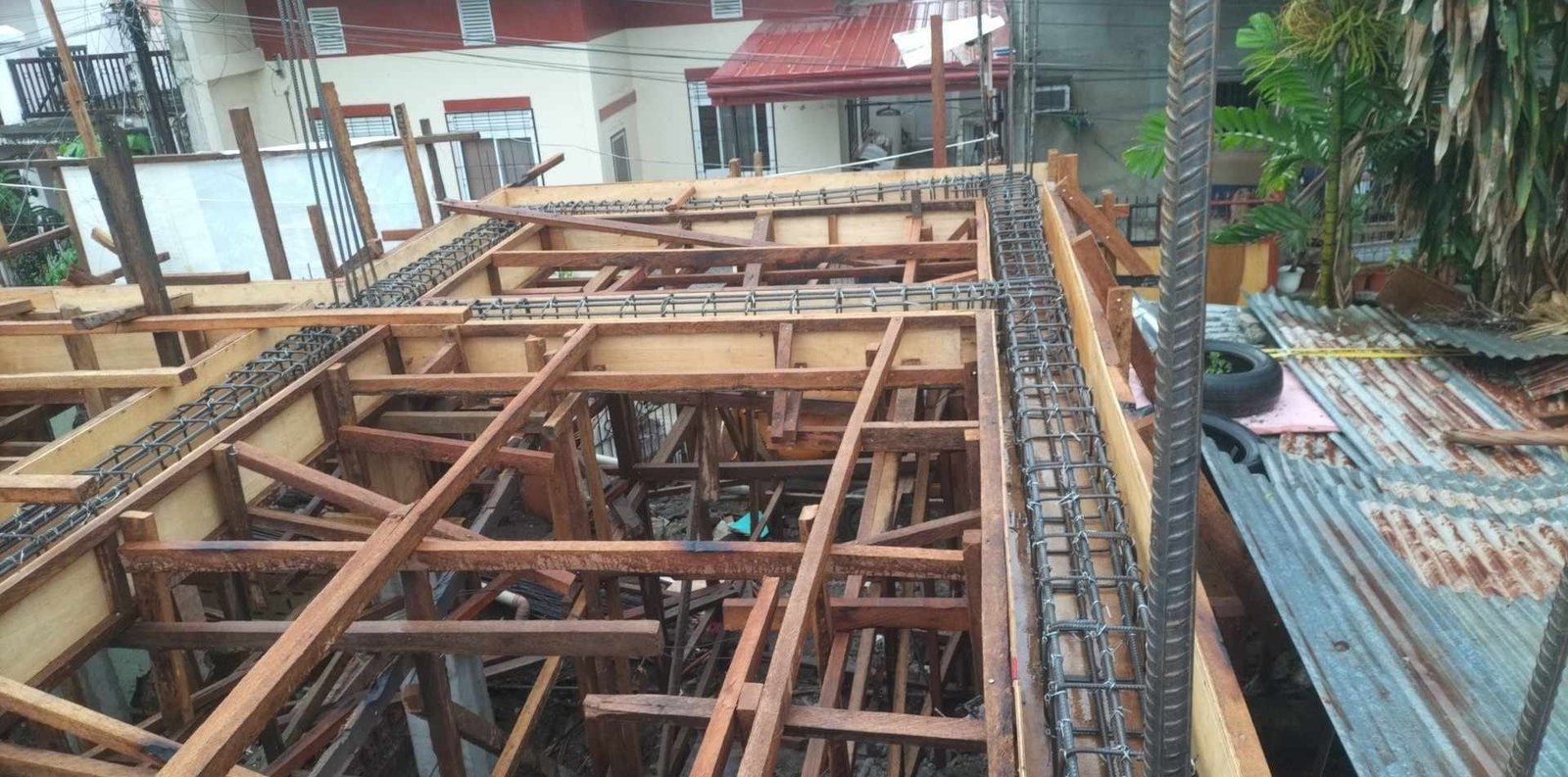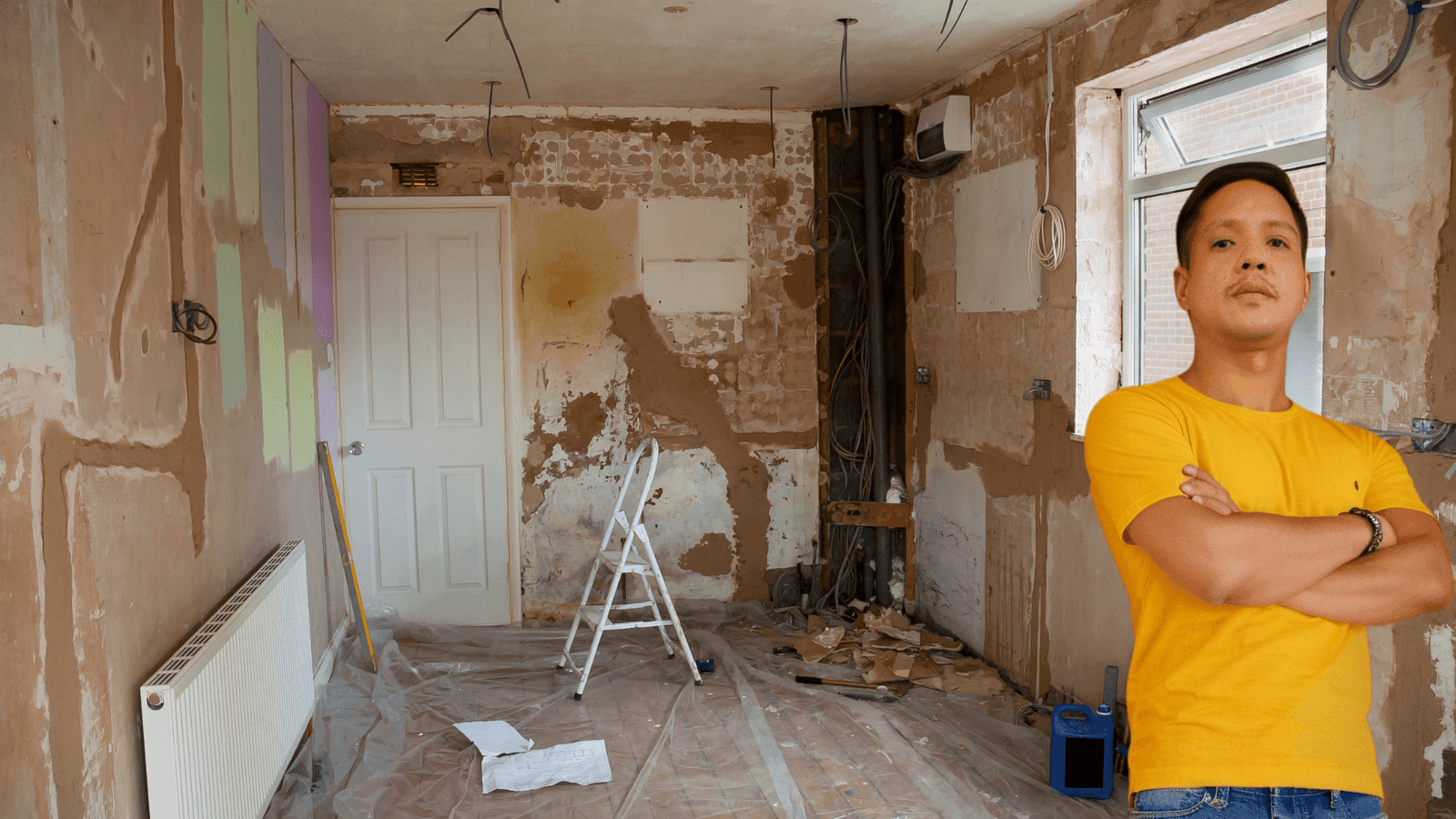Introduction to Home Renovation Budgeting
Budgeting effectively for a home renovation project is imperative for several reasons. One of the primary benefits is avoiding financial strain. Without a clear and well-thought-out budget, costs can quickly spiral out of control, leading to debt and financial stress. On the other hand, a meticulously planned budget ensures that you stay within your financial limits, paving the way for a more manageable and stress-free renovation experience.
Another crucial advantage of comprehensive budget planning for home renovations is achieving the desired outcomes. How to organize your home renovation budget helps allocate resources efficiently, ensuring that every aspect of the renovation receives appropriate funding. Whether it’s hiring a reliable contractor, purchasing high-quality materials, or investing in necessary permits, a detailed budget ensures all critical components are adequately funded, leading to satisfactory results.
In addition, a well-structured renovation financial plan contributes significantly to a smoother renovation process. By outlining all anticipated costs and setting aside funds for unforeseen expenses, you can avoid disruptions and delays. Transparent budgetary allocation not only mitigates the likelihood of encountering hidden renovation costs but also enhances your ability to manage unexpected challenges proactively. For instance, having a contingency fund readily available can address sudden repair needs or additional work without straining the overall budget.
Furthermore, employing sound renovation budgeting strategies often yields significant cost-saving benefits. Identifying cost-effective home remodeling options, leveraging affordable home renovation ideas, and applying practical renovation cost-saving tips are integral to staying within budget. This proactive approach encourages strategic spending, minimizes wastage, and facilitates the prudent use of resources.
Thus, effective budget planning is an essential foundation for any home renovation project. It ensures financial stability, promotes efficient resource allocation, and fosters a seamless renovation journey, ultimately leading to a successful transformation of your living space. By approaching your project with a clear budget, you pave the way for a rewarding and financially viable renovation experience.
1. Assessing Your Financial Situation
Before embarking on any home renovation project, it’s crucial to first assess your current financial situation. This examination will not only help you understand what you can realistically afford but will also prevent you from compromising other essential financial obligations. When assessing your finances, start by evaluating your savings. Determine how much of your savings you are willing and able to allocate toward your renovation endeavors. It’s advisable to keep a portion of your savings untouched to handle any unforeseen expenses or emergencies.
Next, take a look at your regular income sources. Calculate your monthly income after taxes and other mandatory deductions. This step is essential to understand your spending capacity without hampering your day-to-day financial stability. It’s also beneficial to account for any additional, predictable sources of income, such as bonuses or side gigs, which can supplement your renovation budget.
It’s equally important to address any existing debts. High-interest debts, especially, should be prioritized and managed before dedicating significant funds toward renovations. This approach ensures that you are not financially strained further down the line. Assess your monthly obligations, such as mortgage, car loans, and credit card payments, to formulate a realistic budget that includes all facets of your financial responsibilities.
When creating a budget for your home renovation, aim for a balance that allows for cost-effective home remodeling while maintaining your financial health. Utilize cost-saving tips and strategies to make your funds stretch as far as possible, without compromising on quality. Be honest with yourself about your financial limits and avoid hidden costs by thoroughly researching and planning each aspect of your renovation. This careful planning and realistic financial assessment will pave the way for a successful and stress-free home improvement project.
2. Setting Your Renovation Priorities
Successful home renovation entails meticulous budget planning for home renovations and identifying what aspects of your project hold the most value. One of the initial steps is to differentiate between essential renovations and aesthetic upgrades. Essential renovations include structural repairs such as fixing a leaking roof, addressing foundational issues, or updating outdated electrical wiring. These are the must-haves that ensure your home’s functionality, safety, and compliance with modern standards.
On the other hand, aesthetic upgrades enhance the appearance and comfort of your home but might not be necessary for immediate functionality. Think of new countertops, higher-end kitchen appliances, or luxury bathroom fixtures. These often fall into the nice-to-have category, improving the aesthetic appeal and potentially increasing home value without compromising essential operations.
Begin by listing all the changes you wish to make. You can categorize them into three groups: must-haves, nice-to-haves, and optional items. Must-haves are critical repairs or improvements that address safety, compliance, or essential functionality.
Nice-to-haves augment your living experience and potentially add value but aren’t urgent. Optional items might include decor enhancements or specialized upgrades that are only considered if budget permits. This classification aids in a lucid renovation financial planning framework, ensuring that vital costs are prioritized.
As you organize your project, remember that thorough renovation budgeting strategies can prevent common pitfalls. Use renovation cost-saving tips like sourcing materials during sales, comparing contractor quotes, and opting for DIY projects where feasible. Consistently reviewing estimates against your budget plans can avoid hidden renovation costs.
Ultimately, defining clear priorities and being conscious of your home improvement budget enables a streamlined renovation process, maintaining focus on your essential needs while allowing room for transformative, yet budget-conscious, design enhancements.
3. Researching and Estimating Costs
A successful home renovation starts with comprehensive research and accurate cost estimation. Understanding the scope of work is crucial in this initial phase. Begin by clearly defining the renovation goals and the specific areas of your home that need improvement. Whether you’re considering cost-effective home remodeling or a more extensive overhaul, having a clear vision helps in creating detailed and realistic budgets.
One pivotal step in home renovation budgeting is obtaining multiple quotes from contractors. This practice not only provides a broader perspective on the potential costs but also helps in identifying affordable home renovation ideas that fit within your financial parameters. Solicit quotes from at least three contractors, comparing not only the prices but also the scope of work they propose, their timelines, and their reputations.
Material costs can vary significantly depending on quality, brand, and your location. When estimating material costs, consider exploring various suppliers and home improvement stores. Online research and visits to local stores will provide an understanding of price ranges. Additionally, regional price variations can influence your budget planning for home renovations. Costs may be higher in urban areas compared to rural regions, both for materials and labor.
Creating itemized estimates is another essential aspect of renovation financial planning. Break down the overall project into detailed tasks and assign an estimated cost to each task. This method allows for a clearer picture of where the money is going and helps in identifying possible areas for cost-saving. For instance, you might discover that opting for mid-range fixtures rather than high-end options can substantially reduce costs without compromising on aesthetics.
Accurate cost estimation means considering all possible expenses, including permits, inspection fees, and potential hidden costs that might arise. This comprehensive approach to home renovation cost breakdown ensures that you can anticipate financial needs and avoid unpleasant surprises. Employing these renovation budgeting strategies effectively will provide a solid foundation for your project, ensuring it remains within financial constraints and reaches completion successfully.
4. Including Contingency Plans
When planning for a home renovation, it is crucial to incorporate a contingency fund into your budget. This financial safety net helps absorb unforeseen expenses that inevitably arise, ensuring that your project remains on track and your finances aren’t strained. A widely recommended strategy is to allocate between 10-20% of the total renovation budget specifically for unexpected costs. Establishing this buffer can safeguard you against the common pitfalls associated with home improvement projects.
Hidden costs in home renovations are more common than one might expect. For instance, you might uncover unexpected structural issues when you start remodeling. Problems such as outdated wiring, plumbing concerns, or foundational cracks often surface once you begin the demolition process. Addressing these problems is essential, yet they can significantly inflate your budget if you haven’t planned for them.
Another typical hidden expense involves obtaining the necessary permits. Depending on the scope of your renovation, you might need permits for electrical, plumbing, or structural modifications. These permits are not only an additional cost but may also introduce delays into your project timeline if not accounted for early on. Therefore, it’s essential to research the specific permits required in your locality and include their costs in your renovation financial planning.
Moreover, design changes during renovation projects are not uncommon. As the project unfolds, homeowners frequently decide to make alterations to their original plans. Whether inspired by new trends, functional needs, or aesthetic preferences, these changes can lead to additional expenses that were not initially budgeted for. By having a contingency fund, you can accommodate these creative modifications without compromising other aspects of your renovation.
Incorporating a contingency fund into your budget planning for home renovations is an effective strategy to mitigate financial risks. It ensures that your project can adapt to unexpected challenges, minimizes the stress of unforeseen costs, and allows for cost-effective home remodeling. By preparing for these contingencies, you can achieve a more streamlined and financially sound renovation experience.
5. Negotiating with Contractors and Suppliers
One of the most effective home renovation budgeting tips is to negotiate with contractors and suppliers for better value. Obtaining multiple quotes from different contractors is an essential initial step. Comparing these quotes will not only help you grasp the market rates for your required services but also reveal discrepancies in pricing, enabling more informed decisions. When evaluating quotes, look for detailed breakdowns of costs, ensuring clarity on labor, materials, and any additional expenses. This transparency can prevent unexpected costs, a common pitfall in budget planning for home renovations.
Understanding the contract terms is another critical aspect of negotiating. Ensure that the contract comprehensively covers the scope of work, payment schedules, timeframes, and the responsibilities of each party. Clarity in contract terms can prevent disputes and ambiguities, facilitating a smoother renovation process. Additionally, don’t hesitate to request discounts or ask if there are any available promotions. Even a small reduction in costs can contribute significantly to a cost-effective home remodeling project.
Exploring the benefits of bulk buying and sourcing second-hand materials can also lead to substantial savings. Often, contractors have established relationships with suppliers, sometimes entailing preferential rates for bulk purchases. Leveraging this relationship might secure you better pricing. On the other hand, sourcing second-hand materials, which are frequently in excellent condition, offers another avenue for cutting costs without compromising quality. This approach not only supports sustainable practices but also eases the home renovation cost breakdown.
Moreover, consider asking suppliers for quotes on alternative materials that might offer cost savings without sacrificing durability. Clear communication about your budget and expectations with both contractors and suppliers can lead to more costly saving results, ensuring that your home improvement budget is adhered to. Ultimately, informed negotiation and strategic planning are pivotal for effective renovation financial planning. By diligently implementing these strategies, you can optimize your resources, achieving a successful and affordable home renovation project.
Monitoring and Adjusting Your Budget

Successfully managing a home renovation budget requires continuous oversight and adaptability. Throughout the renovation process, it’s imperative to diligently monitor expenses and be prepared to make adjustments as needed. One effective method for tracking costs is through the use of spreadsheets. By setting up a detailed spreadsheet, homeowners can record every incurred expense, categorize them, and compare them to the initial budget estimation. This real-time tracking enables the identification of any deviations early on, ensuring that corrective measures can be taken promptly.
While spreadsheets offer a great deal of customization and visibility, budgeting apps provide another efficient alternative. These apps often come with features designed specifically for home renovation projects, including predefined categories, expense alerts, and integration with bank accounts for seamless tracking. Popular budgeting apps such as YNAB (You Need A Budget), Mint, and HomeZada can streamline the process, making it easier to maintain an up-to-date view of the financial status of your renovation.
Regular reviews of the renovation budget are essential. Scheduling weekly or bi-weekly budget reviews can prevent financial surprises. During these reviews, assess whether the incurred expenses align with the planned budget. If a particular category exceeds its intended allocation, investigate the reasons and reallocate funds accordingly. For instance, if material costs surpass expectations, you might need to adjust labor costs or find more affordable home renovation ideas to balance the overall budget.
Another critical aspect is accounting for unforeseen expenses. Unanticipated issues such as structural damage or necessary code upgrades can arise. By including a contingency fund—typically 10-20% of the total budget—homeowners can buffer against these unexpected costs without derailing the entire project. Paying close attention to detail and making minor adjustments along the way can contribute significantly to a cost-effective home remodeling process.
Implementing these renovation budgeting strategies and utilizing the appropriate tools can transform a potentially overwhelming task into a well-organized, financially controlled project. Continuous monitoring and agile adjustment are key components to avoiding hidden renovation costs, ultimately leading to a successful renovation within budgetary confines.
Final Tips for Staying on Budget
Successfully budgeting for a home renovation requires discipline and effective strategies. One critical tip for staying on budget is to avoid last-minute changes. Once you’ve planned your project and set your budget, stick to it as closely as possible. Sudden alterations can drive up costs quickly and unexpectedly, undermining even the most carefully constructed renovation financial planning.
Continuous communication with your contractors is another essential component of effective budget management. Establish clear lines of communication from the outset and maintain regular check-ins. This ongoing dialogue can help address small issues before they escalate, ensuring that the work remains aligned with your budget planning for home renovations.
Additionally, adherence to the original plan is paramount to avoid financial overreach. Deviating from the initial blueprint can incur significant costs, leading to budget blowouts and potentially compromising the affordability of your home renovation ideas. It’s important to be flexible in solving inevitable issues, but maintaining the core vision and schedule will guard against unnecessarily high expenses.
Emphasize patience and discipline throughout the renovation process. Home improvement projects are often lengthy and can be stressful; however, exercising restraint and avoiding impulsive spending will contribute significantly to a successful renovation within your financial means. Mindfulness in spending decisions and a steady commitment to the renovation budgeting strategies you’ve developed ensures financial prudence and cost-effective home remodeling.
Ultimately, managing and adhering to your home renovation budget requires a combination of proactive planning, continuous oversight, and disciplined decision-making. By avoiding hidden renovation costs through meticulous financial planning and staying faithful to your budget, you can achieve a remarkable transformation of your home without breaking the bank.








